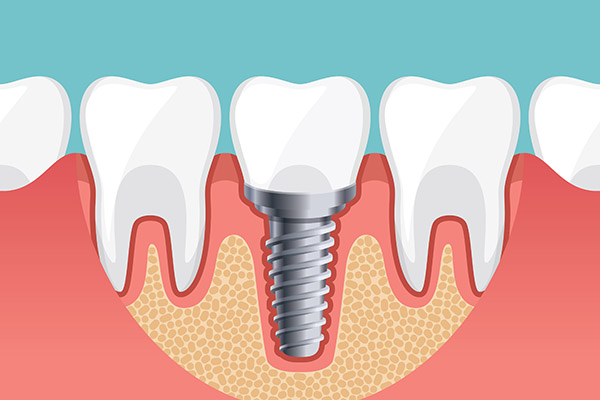 Patients missing one or more teeth may benefit from implant dentistry, which offers long-term replacement options. Continue reading to learn about replacing a single lost tooth with an implant. Implants are used to hold single crowns, bridges, or a whole set of teeth in place. Their application as fixed restorations, whether for single or multiple teeth, is one of the many reasons why implants are becoming more popular.
Patients missing one or more teeth may benefit from implant dentistry, which offers long-term replacement options. Continue reading to learn about replacing a single lost tooth with an implant. Implants are used to hold single crowns, bridges, or a whole set of teeth in place. Their application as fixed restorations, whether for single or multiple teeth, is one of the many reasons why implants are becoming more popular.
Implant dentistry: How to replace a single missing tooth with an implant
Dental implants are tooth root replacements. A tooth is made up of two parts: a crown and a root. A dental crown is the visible area of the tooth that is supported by the root section. The root is hidden under the gum tissue and surrounded by bone. Implants are surgically inserted into the bone to secure a prosthetic crown. Implant dentistry uses cutting-edge technology to create replacement teeth that appear, feel, and function like natural teeth. When natural teeth are lost, the jawbone deteriorates. Dental implants help to prevent this.
A dental implant may be an option for many individuals who have lost a tooth. Patients who smoke, drink heavily or use certain prescription medicines need to talk to a dentist about their choices. The ideal candidate will have excellent dental health, including strong gum tissue and jawbone structure.
How single tooth implants work
The implant is inserted into the jawbone during the dental implant placement procedure. The implant and the bone will fuse over two to six months to provide stable support for the prosthetic tooth. A temporary tooth replacement may be placed over the implant site during this period.
In most cases, a second surgical operation is required to expose the implant and secure an abutment extension. This temporary healing cap completes the framework for the placement of the new tooth. This second step is optional in certain implant systems. The extension component is already attached to the implant in these systems. The dentist will determine the best approach to use. Finally, the dentist will have a crown fabricated for the patient and attach it to a tiny metal post.
Dental implants are usually so natural-looking and feeling that they are hard to tell apart. Each person's situation is unique, and some of these stages may be combined when required. A dentist will help the patient develop the optimal treatment plan based on their specific requirements.
A single tooth implant process may take many months to complete. Bone grafting will be done first if the dentist determines that the patient's jawbone is not strong enough to support the implant. Grafting is the process of taking bone from somewhere else (or utilizing synthetic material) and adding it into the jaw to strengthen it. In some instances, the jaw must recover before the implant can be placed.
The bottom line
A dental implant post may last a lifetime with proper oral health habits. Compared to alternative tooth-replacement choices, implant dentistry offers more long-lasting and sturdier options. Contact our dental office today to schedule an appointment and explore your tooth-replacement options.
Request an appointment or call Paramus Emergency Dental & Implant Center at 201-940-1931 for an appointment in our Oradell office.
Related Posts
Implant dentistry makes everyday activities easier. After tooth loss occurs, certain activities can become more of a challenge, and it can affect the person’s appearance and level of confidence. The good news is that many restore their confidence level and improve their ability to eat, speak, and care for their smile each day with implant…
Your implant dentist may refer to a part of your dental implant restoration as an “abutment.” For many, this is a new term, and understanding what the implant dentist means can be helpful to feel more comfortable about what you can expect with the treatment process and your restoration.A dental abutment is a connecting piece…
Implant dentistry offers a tooth replacement solution that looks and feels natural. This is due in large part to the implant, which fuses together with the jawbone and serves as the support and root of the replacement tooth. This review discusses the unique benefits of choosing implant dentistry to replace a missing tooth.The most notable…
